
7 yellow flowering shrubs
Discover 7 stunning varieties in vibrant and golden hues.
Contents
Like little suns, the yellow flowers of bushes bring brightness to the garden. Intense, vibrant, and warm, yellow can brighten up a flowerbed, hedge, terrace, or balcony. It is a standout colour, widely used in our gardens, particularly to provide a lovely contrast to blue and purple flowers. You can create a summer atmosphere by pairing it with other warm colours, such as orange, red, and purple. Late or winter-flowering bushes will even give us the impression of extending the summer season. Discover our selection of 7 yellow-flowering shrubs to brighten up the garden.

The St John’s Wort ‘Hidcote’ with yellow flowers paired with the blue flowers of lavender
The Alpine Laburnum
The Laburnum alpinum ‘Pendulum’, commonly known as the Alpine Laburnum, is a graceful bush with a slightly weeping, upright, and spreading habit. From May to June, it produces a magnificent flowering display in the form of long clusters of golden-yellow, pendulous, highly fragrant, and melliferous flowers. Its deciduous foliage, glossy dark green, turns yellow with the arrival of autumn. Easy to grow, hardy, and low-maintenance, this laburnum can be planted in ordinary or poor, well-drained, even dry soil, and it tolerates lime. It will thrive in sunny exposure in northern regions and prefer partial shade in the warm southern areas. Growing rapidly, it will reach 2 m in all directions at maturity. This beautiful shrub will look stunning when planted alone, in a shrub border, or in a hedge alongside a Mock Orange, a Lilac, a Japanese Quince, or a Cherry. It is important to note that the seeds of the laburnum are toxic and should not be consumed.
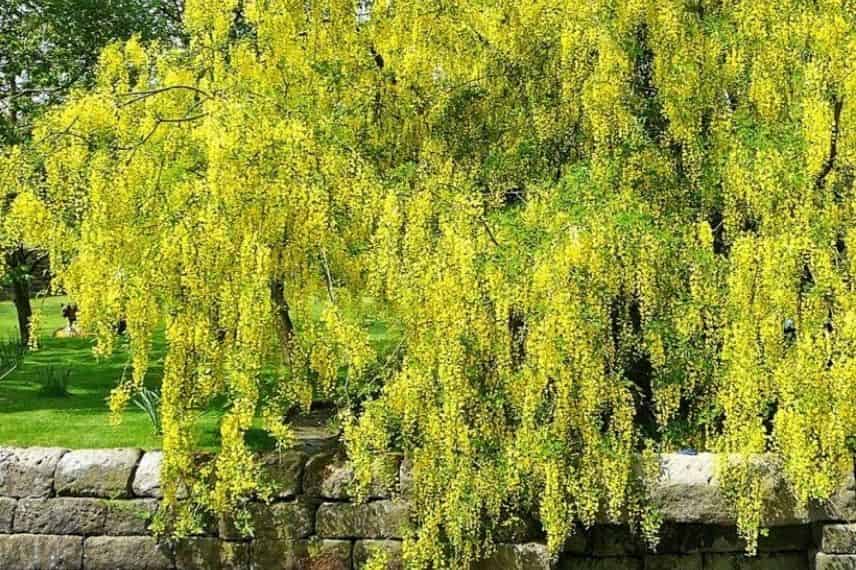
Forsythia intermedia 'Weekend'
The Forsythia intermedia ‘Week-end’ is renowned for its vigour and rapid growth, reaching heights of up to 2.5 m and a spread of 2 m. This beautiful variety of Parisian Mimosa has a lovely bushy habit, well-ramified, upright, and dense. From the end of winter, its naked branches are adorned with bright yellow flowers, providing a magnificent display. The flowers will then give way to green foliage, which may take on a purplish hue under the influence of autumn’s chill. Unfussy and highly resistant to frost, this Forsythia will adapt to all types of soil, even clay or limestone, as long as it is enriched. Provide it with a sunny or partially shaded location if you live in a warm region. With its beautiful compact silhouette, it will be perfect as a standalone specimen, in a shrub border, or in a flowering hedge, alongside a Berberis, a Japanese quince, a Cotinus, a Japanese Kerria, or a Mahonia to extend the flowering season.
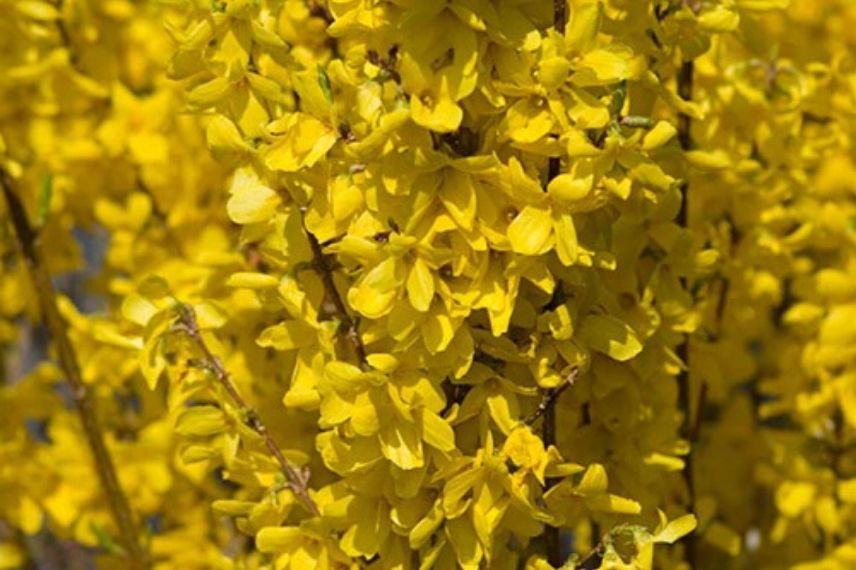
Discover other Shrubs by flower colour
View all →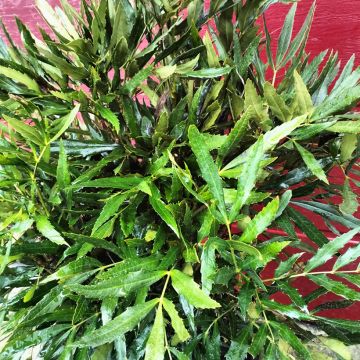
Available in 1 sizes
Available in 1 sizes
The Japanese rose 'Pleniflora'
The Kerria japonica ‘Pleniflora’, commonly known as Japanese rose, is a beautiful bush with a bushy habit, reaching up to 2 m in height and 2.5 m in spread at ripeness. From April to May, its green, arching stems are adorned with lovely small, orange-yellow pompom-shaped flowers, resembling little suns. Particularly hardy and easy to grow, it thrives throughout France, provided the soil is rich, rather cool, and well-drained. The Japanese rose prefers to be planted in partial shade or full sun. This lovely bushy plant with deciduous foliage can be planted alone, in a free-standing hedge, in a border, or in a pot to enhance a terrace. It pairs wonderfully with other yellow-flowering shrubs such as Laburnum, Broom, Forsythia, or blue-purple flowers like Lilac, Buddleia, or Hydrangea in acidic soil.

Mimosa 'Lisette'
The Four Seasons Mimosa ‘Lisette’ is a particularly floriferous variety of Acacia retinodes, offering a multitude of clusters of yellow flowers shaped like adorable little, highly fragrant pom-poms. It is notable for having evergreen foliage, as well as blooming multiple times a year, with the most abundant flowering occurring from May to November. This large bush has a dense, rounded habit, reaching up to 4 m in all directions at maturity. It can be pruned to encourage denser growth, as well as to maintain a more moderate size. Not very hardy, but well resistant to summer drought, it is best to cultivate it in the ground in regions with mild climates and in pots to be sheltered in winter elsewhere. This mimosa prefers to grow in full sun, sheltered from strong winds, in all types of well-drained soil. In the garden, it will make a statement when planted alone, in a hedge, or alongside an Escallonia, a Solanum, an Abutilon, and a Blue Flamboyant (Jacaranda mimosifolia).
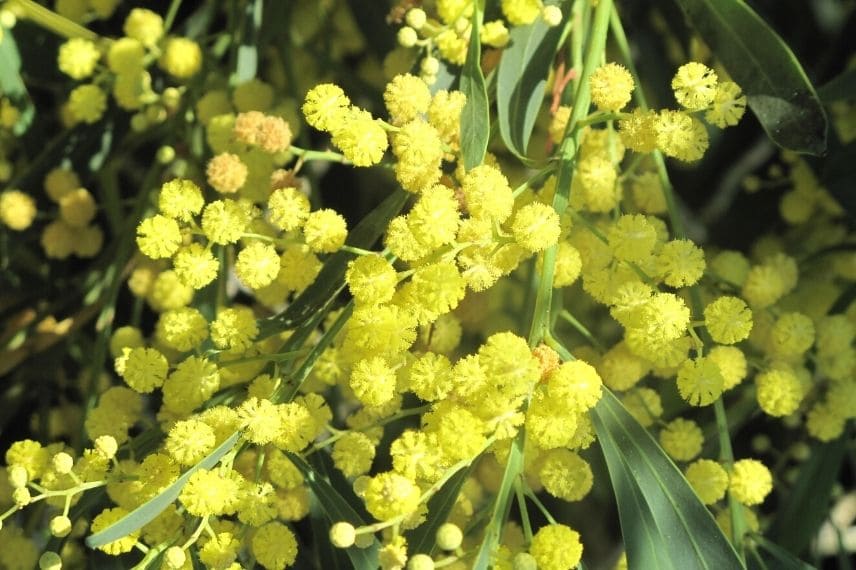
St John's Wort 'Hidcote'
If you are looking for a low-maintenance, generous bush that adapts absolutely anywhere, even in the less hospitable areas of the garden, St. John’s Wort ‘Hidcote’ is the one for you. It quickly forms a beautiful bush with dark green, bluish, semi-evergreen leaves, reaching 1.5 m in all directions. Under the influence of winter cold, its elongated leaves take on a reddish hue. Its long flowering period of golden yellow flowers begins in July and continues until October. This bush should be planted in full sun in cooler regions, but in partial shade in warmer climates. Hardy and resilient, it thrives in poor to rich soil, whether calcareous, dry, or moist, but always well-drained. With its spreading, dense, rounded habit, it will be perfect in a border or hedge, alongside Weigelas, Buddleias, Kerrias, Philadelphus, Lilacs, and Roses.

Cytisus scoparius 'Luna'
The Cytisus scoparius ‘Luna’ is a variety of Broom that offers a beautiful bright flowering, lemon yellow in colour, from May to June. Vigorous and very hardy, its habit is bushy, upright, and dense, yet with a soft appearance, reaching up to 2 m in height and 1.5 m in width. Unfussy, this broom prefers to be planted in full sun, in light, sandy or stony, well-drained soil. Its lovely silhouette will not go unnoticed at the top of a bank, as a specimen in the garden, or in a border alongside dwarf conifers, or flowering bushes in blue mauve for a lovely contrast, such as Lilac, Ceanothus, Rosemary, or lavender.
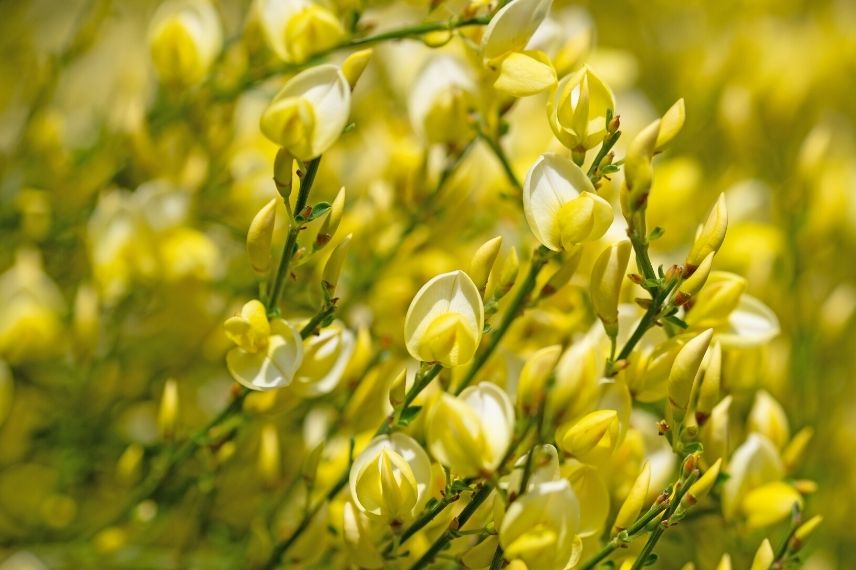
Chinese Azalea 'Lingot d'Or'
The Chinese Azalea ‘Lingot d’Or’ is the ideal bush to bring brightness to a heather soil garden. Its beautiful golden yellow flowers bloom in early spring, forming magnificent round and fragrant bouquets that will make you forget winter at first glance. Its deciduous foliage is a lovely bright green, turning purple in autumn. Its upright and rounded habit can reach 1.5 m in height and 1 m in width. This lovely bush appreciates a location in partial shade, but can also be planted in full sun, in acidic and non-calcareous soil. Very cold-resistant, it will suit almost all regions as long as its substrate remains cool and well-drained. It will look stunning in a pot on a balcony, in a hedge, or in a border. It can be paired with other heather soil bushes such as a Japanese Andromeda, a Mahonia, a Camellia, a Japanese Maple, and an Enkianthus.
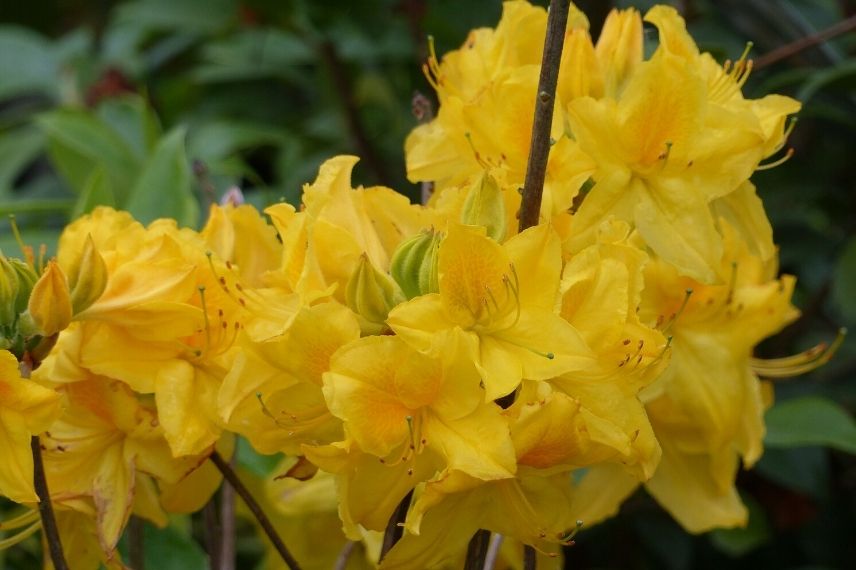
For further reading
Discover all our yellow-flowering bushes here
- Subscribe!
- Contents
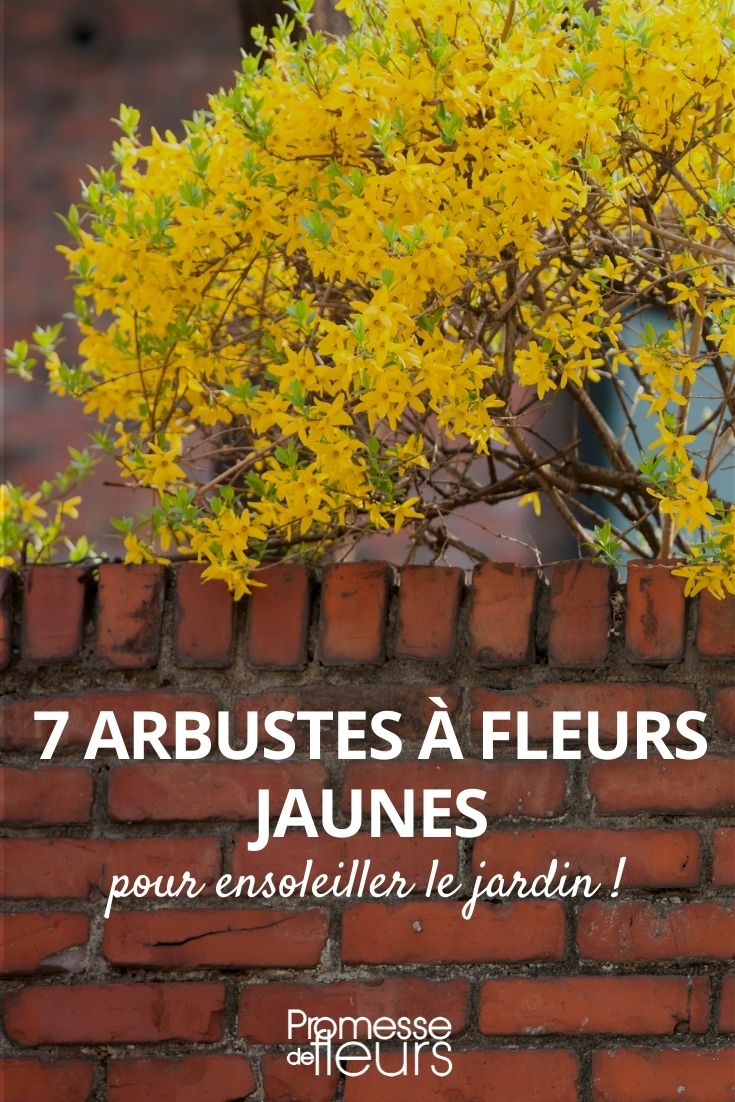
































Comments